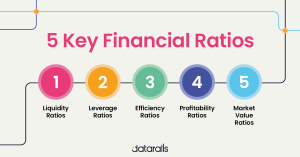
Financial Risk Management

Effective financial risk management is crucial for the long-term success and stability of any business. Understanding and mitigating potential financial threats allows businesses to make informed decisions, optimize resource allocation, and ultimately enhance profitability. This section Artikels common financial risks, mitigation strategies, assessment tools, cash flow management best practices, and steps for developing a comprehensive risk management plan.
Common Financial Risks and Mitigation Strategies
Businesses face a multitude of financial risks. These can broadly be categorized into market risk (fluctuations in interest rates, exchange rates, and commodity prices), credit risk (the risk of non-payment by borrowers or customers), liquidity risk (the inability to meet short-term obligations), and operational risk (risks stemming from internal processes, systems, or human error). Mitigation strategies often involve a combination of approaches.
For instance, market risk can be mitigated through hedging techniques like using derivatives (e.g., futures contracts) to offset potential losses from price volatility. Credit risk can be reduced by thoroughly vetting customers and implementing robust credit scoring systems. Liquidity risk is managed by maintaining sufficient cash reserves and establishing lines of credit. Operational risks are minimized through robust internal controls, employee training, and contingency planning.
Insurance plays a vital role in mitigating various financial risks, providing a financial safety net against unforeseen events such as property damage, liability claims, or business interruption.
Financial Risk Assessment Tools and Techniques
Several tools and techniques are used to assess and quantify financial risks. Sensitivity analysis helps determine the impact of changes in key variables (e.g., sales volume, interest rates) on financial performance. Scenario planning involves developing different possible future scenarios (e.g., best-case, worst-case) and evaluating their potential impact. Value at Risk (VaR) models estimate the potential loss in value of an asset or portfolio over a specific time period and confidence level.
For example, a VaR of $1 million at a 95% confidence level suggests there’s a 5% chance of losing at least $1 million over the specified period. Stress testing assesses the resilience of a business to extreme market events (e.g., a sudden economic downturn). These methods, when used in conjunction, provide a comprehensive understanding of a business’s financial risk profile.
Best Practices for Managing Cash Flow and Working Capital
Effective cash flow management is essential for business survival. Best practices include accurate forecasting of cash inflows and outflows, establishing a robust budgeting system, implementing efficient accounts receivable and payable processes, and negotiating favorable payment terms with suppliers. Working capital management involves optimizing the balance between current assets (e.g., cash, inventory) and current liabilities (e.g., accounts payable). Maintaining an appropriate level of working capital ensures the business has sufficient liquidity to meet its short-term obligations and take advantage of growth opportunities.
Techniques such as inventory management systems (e.g., Just-in-Time inventory) and efficient collection of receivables are crucial for optimizing working capital.
Developing a Robust Risk Management Plan: A Checklist
A well-defined risk management plan is a proactive measure that safeguards the financial health of a business. The following checklist Artikels key steps in developing such a plan:
- Identify potential financial risks: Conduct a thorough assessment of all potential financial risks facing the business, considering both internal and external factors.
- Analyze and prioritize risks: Evaluate the likelihood and potential impact of each identified risk. Prioritize risks based on their severity.
- Develop mitigation strategies: For each prioritized risk, develop specific strategies to mitigate or reduce its potential impact. This might include insurance, hedging, diversification, or improved internal controls.
- Implement and monitor mitigation strategies: Put the chosen mitigation strategies into action and regularly monitor their effectiveness.
- Regularly review and update the risk management plan: The business environment is constantly changing, so the risk management plan should be reviewed and updated periodically to reflect these changes.
- Document the risk management process: Maintain detailed records of all risk assessments, mitigation strategies, and monitoring activities.
Legal and Regulatory Compliance

Navigating the complex landscape of financial regulations is crucial for the success and longevity of any financial business. Failure to comply can lead to significant financial penalties, reputational damage, and even legal action. This section Artikels key legal and regulatory requirements, the importance of meticulous record-keeping, common compliance issues, and best practices for maintaining a compliant financial operation.Maintaining accurate financial records is paramount for several reasons.
Accurate records provide a clear picture of the financial health of the business, enabling informed decision-making and facilitating effective financial planning. They are also essential for complying with tax obligations, conducting audits, and responding to regulatory inquiries. Furthermore, well-maintained records provide a strong defense against potential legal challenges.
Key Legal and Regulatory Requirements
Financial businesses are subject to a wide array of laws and regulations, varying significantly depending on the specific type of business, location, and the services offered. These regulations often cover areas such as anti-money laundering (AML), know your customer (KYC) procedures, data privacy (e.g., GDPR), and specific industry-specific regulations like those governing investment firms or banks. For example, the Securities and Exchange Commission (SEC) in the United States has extensive regulations governing publicly traded companies and investment advisors, while similar bodies exist in other countries to enforce financial regulations.
Non-compliance with these regulations can result in substantial fines and legal repercussions.
Importance of Accurate Financial Records
Accurate financial records are the cornerstone of legal and regulatory compliance. They provide a verifiable audit trail for all financial transactions, enabling businesses to demonstrate adherence to relevant laws and regulations. These records should be consistently maintained, easily accessible, and stored securely. The use of accounting software and regular reconciliation procedures significantly contributes to the accuracy and reliability of these records.
Failure to maintain accurate records can lead to difficulties during audits, tax filings, and investigations, potentially resulting in penalties and legal disputes. For instance, inaccurate reporting of income can lead to significant tax liabilities and potential criminal charges.
Examples of Common Financial Compliance Issues and Their Consequences
Common compliance issues include inaccurate financial reporting, failure to comply with AML/KYC regulations, inadequate data security measures leading to data breaches, and non-compliance with tax regulations. The consequences of these issues can be severe. For example, failure to comply with AML/KYC regulations can lead to significant fines, reputational damage, and even the suspension or revocation of business licenses. Data breaches can result in substantial financial losses, legal action from affected individuals, and damage to brand reputation.
Tax evasion carries significant penalties, including fines, interest charges, and even imprisonment.
Best Practices for Ensuring Compliance
Implementing robust compliance programs is vital. This involves establishing clear policies and procedures, conducting regular internal audits, providing comprehensive training to employees, and utilizing appropriate technology to manage financial records and monitor compliance. Regular review and updates of compliance procedures are necessary to adapt to evolving regulations. Engaging with legal and compliance professionals can provide valuable guidance and support in navigating the complexities of financial regulations.
Proactive measures, such as implementing a strong internal control system and conducting regular risk assessments, can significantly reduce the likelihood of compliance issues and their associated consequences.

